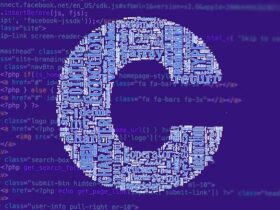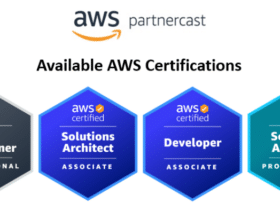I’ve just finished reading a new book with a different approach to office productivity. Michael Kribus, the author of Visual Pathways – Taking Back Control, posits that the computer screen limits our flexibility with planning and prioritizing work. This book provides a complete system for managing work using your entire desk as a cockpit, rather than just your computer screen.
Something that Visual Pathways addressed that I haven’t seen in other systems is how to handle work emergencies quickly so you can get back to normal. That way unplanned work doesn’t derail you for a few days afterward.
If you want to read the book yourself, Michael has generously offered my readers a discount when you use the promo code at the bottom of this page.
I had the chance to interview Michael over email, and he can explain the system better than me, so here you go…
Can you briefly explain what the Visual Pathways System is?
Visual Pathways was developed as a practical method for personal time management to improve productivity. It offers a holistic approach to better control your time so you can appropriately deal with upcoming deadlines and this will help you achieve your career and life goals.
What problems were you trying to solve when you created this system?
The challenges we all face today in this techno-centric world are overwhelming our minds. We live in a fast-paced world and we’re required to interact and respond almost in real-time and work on multiple projects simultaneously. The abundance of information available to us is much more than we can handle. With the availability of mobile devices and constant access to the internet, we are now facing the challenge to manage our time efficiently without being distracted by unimportant things.
How has implementing Visual Pathways affected your home life?
I was working 11 hours a day before using Visual Pathways. I took work back home and worked on weekends. I had so many things I wanted to do but did not have the time to handle them. Now, I work nine hours a day and sometimes less, thanks to Visual Pathways. I never take work back home and I have time to do all the things I like. I have a clear mind and vision about my goals that I’m accomplishing quite efficiently.
What changes did you notice in your relationships at work?
These days, nothing can knock me off my feet. I handle up to 16 projects simultaneously and have absolute control over what is happening in every one of them. I seldom get surprised with unexpected events and I enjoy stress-free days. Many of my co-workers and people from other departments often ask me how to manage their time and accomplish the results they desire.
What are the key differences between Visual Pathways and David Allen’s Getting Things Done?
I never compare my method to any other; I believe each technique is unique. My approach focuses on how the human mind works and it provides a set of simple and creative tools. I promote hand-writing, but I still use my Mac on a daily basis. Computers are here to stay and are excellent tools, though we need to learn how to maximize our use of them to our own benefits – they are not a silver bullet.
With Visual Pathways, you will learn how to effectively manage any jobs or responsibilities. This method provides you with better clarity and focus for an improved and efficient performance.
How does Visual Pathways work?
Visual Pathways uses lists and notes, printed or handwritten, placed alongside your computer when appropriate. Computer screens take up a small space of our field of view and if we designate all of our time management work to a computer, we are more like to switch tasks and become distracted. Working this way limits our perception and restricts our holistic view of any task at hand.
We have two hands and ten fingers; computers are operated with the mouse pointer. We think more logically on paper and this is one of the secrets of Visual Pathways – making sure you understand the meaning and goal of each action rather than deferring it to a computerized to-do list.
Like many researchers around the world, I believe that paper is the ultimate creation and thinking medium. It has no fancy interface, and though it’s not as elegant as software tools, simplicity is often required to solve problems, plan, and execute properly. Anything outside of the virtual world has much more impact on our perception than any software existed – trust me, I have spent thousands of dollars trying every to-do app.
When it comes to communication, storage, information retrieval, content creation, or number crunching, I use my Mac. When it is appropriate, I print these document or sheets and pin them above or to the side of my computer screen; their presence has a tremendous concrete impact on my awareness and engagement.
For example, when I need to prepare a presentation for one of my public speaking sessions, I start with a pen and paper, a simple mind map, and sticky notes. This provides me with the space and freedom to think without any limitations; there is no need for sophistication and little functionality is involved. Then I create a more detailed mind map on my Mac, which consists of many specific actions with much more detail. Finally, I print the action list and place it in my notebook or on a clipboard. For less complicated tasks, I use my paper notebook to store all planned activities in a simple list – each project has a dedicated section marked with a post-it tab. I review the proper project section each day and pull the relevant action items into my daily action sheet, handwritten for each day.
Anyone knows that achieving goals requires consistency and good habits. With Visual Pathways, I outline a straightforward workflow of actions for activities we all face in our daily lives. These simple and effective habits contribute to our success and awareness even when we have multiple projects or obligations running at the same time.
Visual Pathways is not just about to-do grinding and finishing tasks on time and on budget; it presents a more holistic approach to discover a better version of yourself, like getting up earlier than anyone else, running productive meetings, and improved communication with other people. There is also an efficient way to deal with email using a method called the “circle of importance.” I get around 200-300 emails a day and still manage to leave the office with “inbox zero.”
What are your favorite Visual Pathways tools?
Paper is number one when it comes to managing my daily activities and to-do lists. I also use working sheet templates available on the Visual Pathways website for free at www.visual-pathways.com. I use sticky notes, color pens, and highlighters as colors have a tremendous impact on our minds. I make sure my plans and goals are printed out and visible at all times, so my level of engagement is much higher.
How would you recommend people can get started?
I would say that the first and the most critical step is to plan each day on paper. Having your to-do list in front of you in your own handwriting has a tremendous impact on your commitment and clarity.
Why do you think people don’t spend time planning? How much of our time should be spent planning versus executing tasks?
Planning takes time and people often think it’s wasting their time. On the contrary, planning actually saves you time when you start grinding. It gives you a focal point and paves the way for accomplishment. Plans are particularly critical if you want to reach your goals because they have a tremendous impact on how we take action. I spend about 30 minutes a day planning, making sure all the tasks I want to complete each day are written and prioritized with colors. I plan weekly, monthly and, by the end of the year, I have a grand plan for the next year.
Is there anything else you would like to share with my readers?
My best advice is to make sure you plan and have a clear goal about what you want to achieve. Ask yourself questions and think before acting on anything that could have a prolonged impact on your life. Make sure that the purpose of what you are doing is not just for the sake of “doing it”, but has an outcome with a defined value.


















